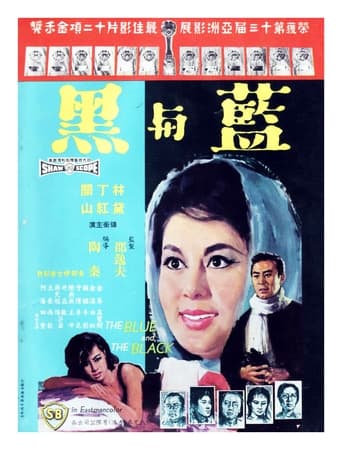

In this film, which is the first of two parts, the incomparable Lin Dai plays Tang Qi and Kwan Shan plays Xing Ya. He is infatuated with her, and why not? Ms. Dai was a beautiful young lady, she lights up the screen. She also committed suicide before the wrap of part 2 (this film was released separately in two parts, owing to its 4 hour length). Even 40 years plus on, it is such a massive shame Ms. Dai killed herself. Qi and Xing play lovers whose families are opposed to being together. The film is set during the Japanese occupation of World War 2, and that thread in mostly in the background for this part. You are mostly dealing with the forbidden love here. The colors of this film are vibrant, the film has a richness that is very appealing. Various things happen to Qi, and the film is very melodramatic, a Shaw Brothers trademark. Since there is a part 2, the film doesn't resolve itself here. One minor complaint is that Ms. Dai and Mr. Shan are older in years than their roles, especially Mr. Shan. However, if you like a forbidden love story, you could do a lot worse. One caution: If you buy the DVD, don't watch the Special Feature interviews before watching part 2. One of the interviewees gave away the ending. Too late for me, doesn't have to be for you. Based on this first installment of this film, I'm ready for part 2.
... View MoreTHE BLUE AND THE BLACK, PART 1 (1966) is the first of two films based on the popular novel by Wang Lam. Produced by Hong Kong's Shaw Bros. studio in color and widescreen, it's a powerful melodrama about a thwarted romance in 1930s Tientsin, China, during the Japanese occupation, and it stars Linda Lin Dai, one of the era's most popular stars, who committed suicide in 1964, two years before the film's release.Lin Dai stars as Tang Qi, an orphaned young woman who lives with her affluent aunt and her family but is seen as headstrong and impulsive because of her independent attitudes and actions. When she falls for a young teacher, Xingya (Kwan Shan), and he for her, the family objects and seeks instead to arrange a marriage for her with someone else, partly as a means of exerting control. In anguish, Tang Qi leaves home to work as a hospital nurse and live in her own apartment. She insists that Xingya join her, but he cannot bring himself to scandalize his own family and she breaks off with him. A horrible encounter with her employer leads to her quitting the hospital and becoming a nightclub singer. At one point, she performs a song that just had to have broken audiences' hearts en masse back then. It ends with the line, "So deep the hatred, so profound the love. I'm still waiting for you here madly." Later, Xingya decides to join the Chinese nationalists and their resistance efforts against the Japanese army and tries to persuade Tang Qi to join him. Part 1 ends with a spectacular nighttime battle wherein the Chinese nationalists attack and overrun a Japanese position.This is very much a grand, sweeping, romantic melodrama in the tradition of so many stories like it told in other cultures, including Hollywood. Western viewers will find much that is familiar to them. At the same time, however, the film gives us a deeply-felt look at traditional Chinese family structures and relationships and allows us to see these matters from both sides of the equation. We understand the strong spirit of Tang Qi and want to see it flourish. But we also understand why the family members act the way they do and their keen interest in preserving as many of their traditions as they can during a period of upheaval caused by the Japanese occupation.Linda Lin Dai (LES BELLES, THE LAST WOMAN OF SHANG, both also reviewed on this site) was the most intense of Hong Kong actresses and we can clearly see here a beautiful flame that perhaps blazed too brightly and then burnt out. With six films in various stages of completion when she committed suicide (at the age of 29), all of which would come out gradually over the next three years, it's not hard to wonder if she'd simply worked herself too hard.The film is beautifully shot in color and widescreen and recreates 1930s Tientsin quite convincingly on Shaw Bros. sets, with some location work. The other performers are all equally good, including Chin Han, Wong Chung, Angela Yu Chien and Ouyang Shafei. This is the kind of Hong Kong film most westerners don't normally get to see. It opens our eyes to the thriving film industry Hong Kong had in the 1960s. And we must thank Celestial Pictures, rights-holder of the SB library, for making these films available to us in remastered, restored high-quality editions.A word about the sequel, THE BLUE AND THE BLACK PART 2 (also reviewed on this site): To this viewer's profound disappointment, Lin Dai is relegated to more of a supporting role and the film suffers for it. (She apparently died before her work on the film was finished.) But it continues the story through World War II and the Communist takeover of China and should be seen by fans of the first part.
... View More